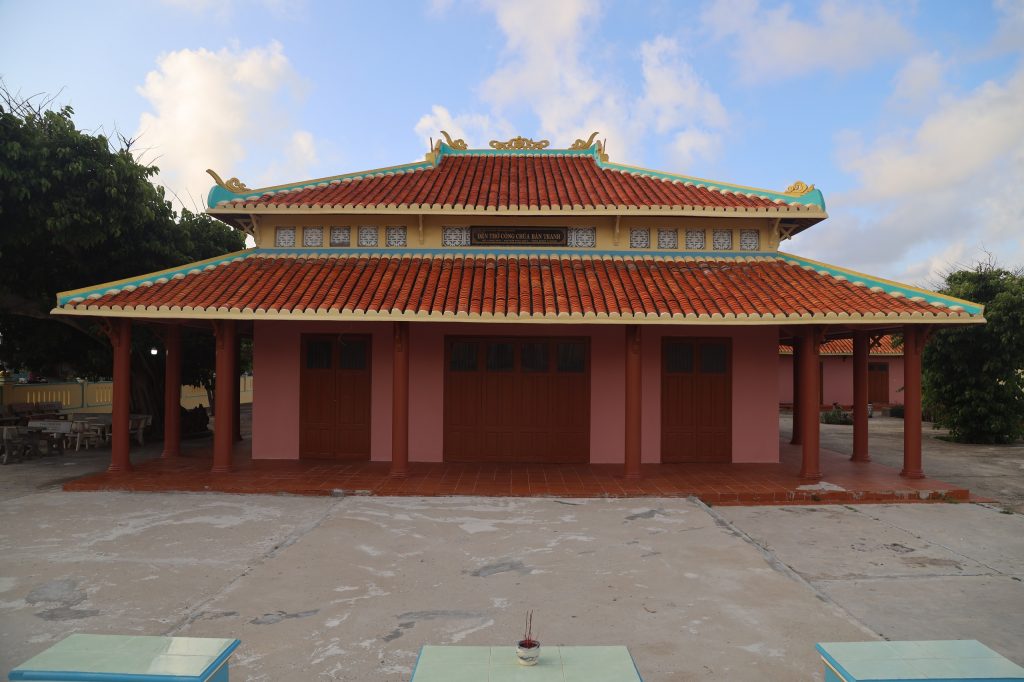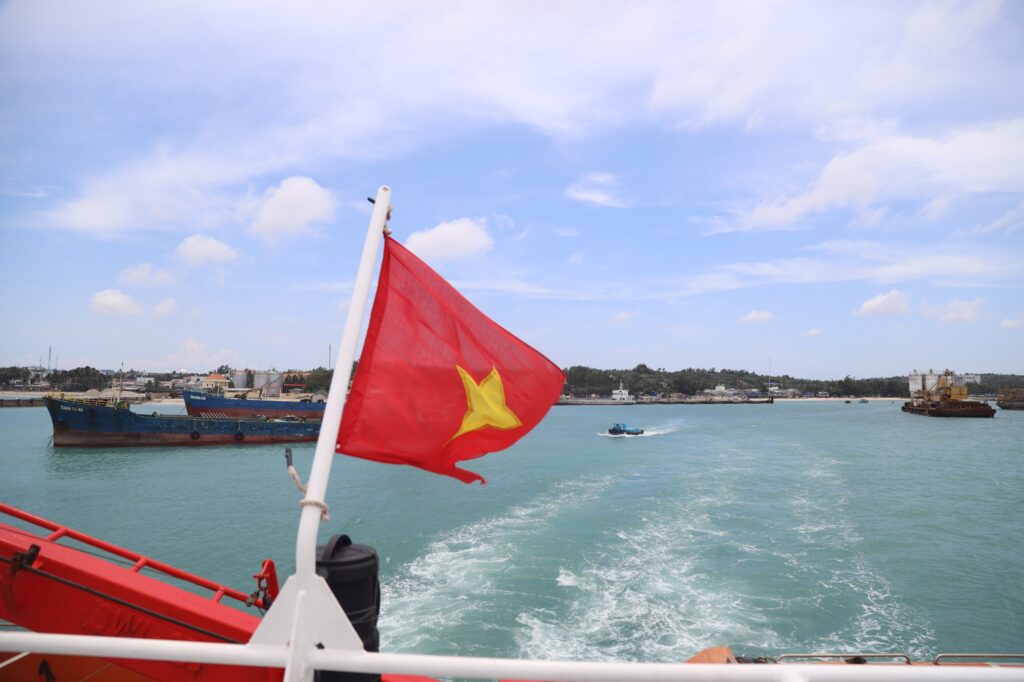While gathering documents about Phú Quý, we came across an article by researcher Lê Hữu Lễ in the Journal of Research and Development, Issue No. 1 (78), 2010, which mentions the Princess Shrine and Cham relics—revealing intriguing secrets surrounding the Princess Bàn Tranh Temple on Phú Quý Island. Let’s explore them together!
The temple was built by the Cham people in the late 15th century. According to legend, Princess Bàn Tranh of the Champa Kingdom was exiled to the island by her royal father at a young age due to a transgression. After her death, she was buried there. Later, when the Vietnamese (Kinh) people came to settle on the island, they continued to venerate her and referred to the site as the Temple of Princess Bàn Tranh. Due to her spiritual power and significant role in protecting and blessing the islanders, she became revered as the Lady of the Land or Island Goddess.
“After her passing, Princess Bàn Tranh became a sacred spirit who helped people in need. In the first year of Emperor Minh Mạng’s reign (1820), she was conferred the title ‘Bàn Tranh Vương – Revered Spirit’ by royal decree. In her temple, her tomb lies directly beneath the main altar, above which rests a stone stele made from a type of whetstone found off the coast of Phú Quý Island, inscribed with the large character ‘THẦN’ (Spirit).” For this reason, locals generally avoid visiting the shrine casually, fearing they might disturb her rest. They only gather to clean and worship on special ceremonial occasions. When plans were made to rebuild and enlarge the temple, the construction team approached the site with great caution out of fear of spiritual retribution. As a result, it took a long time to complete the new structure, which now resembles what we see today.
The temple’s spiritual and architectural value centers on the Main Hall. Inside are three sacred altars—the central one dedicated to Princess Bàn Tranh, flanked by altars to the Tiền hiền (Pioneering Ancestors) and Hậu hiền (Later Ancestors) who contributed to establishing and preserving the shrine. At the central altar are three stone Kút (Cham-style sacred pillars) placed on a platform, with the middle one larger than the others. Unlike traditional Cham Kút, which feature distinctive carvings, these show a blend of Cham and Vietnamese artistic styles. Between the Kút are Sino-Vietnamese inscriptions, such as the altar plaque reading: “Cung Bà Tranh vương thần vị” (Respectfully dedicated to the Spirit of Princess Bàn Tranh).
The shrine also retains several horizontal plaques and couplets in classical Chinese script, praising the virtue and contributions of Princess Bàn Tranh and the ancestral spirits. Over time, worship of the princess has become the most sacred and widely practiced belief among the islanders, who view her as a powerful guardian spirit guiding and protecting them in daily life and work.
The shrine remains closed throughout the year and only opens during specific ceremonial festivals. On the 3rd day of the lunar New Year (Tết), during the Death Anniversary of Princess Bàn Tranh, a procession carries the royal decree (sắc phong) from the village temple (or communal house) to the Princess Temple for the main ceremony. The decree is then brought to the Thầy Sài Nại Temple to continue the rites, before being returned to its original place. The festival activities take place at the Thầy Sài Nại Temple, as eating and entertainment are not permitted at the Princess Shrine due to ritual customs.
On the 4th day of the 4th lunar month, during the Giao Phiên Ceremony, the current village in charge carries the royal decree from its temple to the Princess Bàn Tranh Shrine for a spirit-inviting ritual. The decree is then moved to the Thầy Sài Nại Temple for the main celebration. After the Chánh tế (principal ritual), the Tuyên sắc (Decree Announcement) ceremony is held, followed by the Giao Phiên ritual in which the sacred duties and royal decree are formally handed over to the next village in charge. The decree does not return to its previous location but is transferred directly to the successor village’s temple.
Currently, islanders still preserve eight royal decrees (sắc phong) honoring Princess Bàn Tranh, issued by various emperors including Minh Mạng, Thiệu Trị, Tự Đức, Đồng Khánh, Duy Tân, and Khải Định. Of these, five are dedicated solely to Princess Bàn Tranh, while three—issued under Emperors Tự Đức, Đồng Khánh, and Duy Tân—are jointly addressed to both Princess Bàn Tranh and Thầy Sài Nại.










